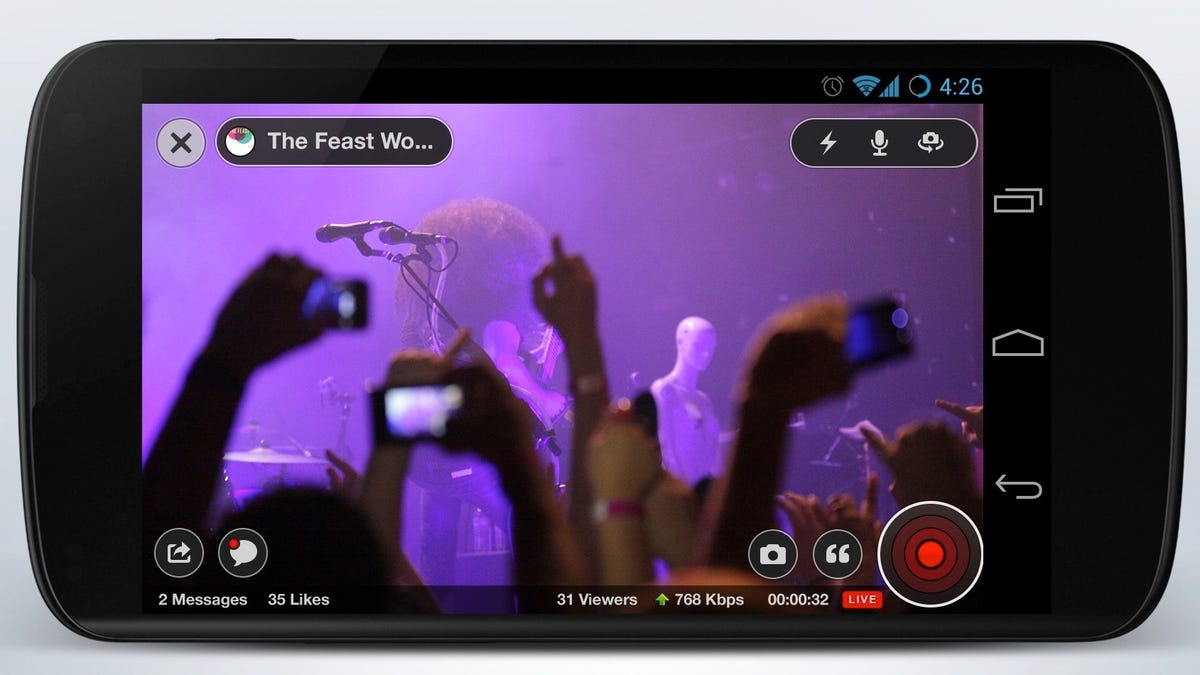Livestream cues up Android app for the masses
<b>exclusive</b> The company in a two-way race to be the Internet's prime live-event streamer catches up with Ustream by adding an Android app to watch and broadcast live video on the go.

Fresh off powering the first live Internet video stream from the floor of the New York Stock Exchange for Twitter's initial public offering, Livestream is making a public offering of its own.
The company, which is vying with Ustream to become the go-to place for live Web broadcasting and viewing, Friday launched an app for Android that lets users both broadcast live video and watch it in one program.
The new app replaces and expands the company's previous app for Android, the Google operating system that holds more than 80 percent of the world's smartphone market. The former app, called Livestream for Producers, was designed only for broadcasting and was meant mostly for professionals.
The new app is meant for anybody, and it integrates viewing of live or archived video with simple live filming and broadcasting. It introduces push alerts that let users know when one of the accounts they follow is starting to broadcast live, which will come in handy for people who have a favorite Kitten Cam they don't want to miss.
The app's "featured video" page is populated by the top picks of the Livestream editorial team, and it has a homepage based on what an individual user follows.
To broadcast an event, you press a camera icon, select either a pre-existing event or create an event right then, and tap a big red button to start streaming. The app instantly provides a URL to share your stream, and you can post a link to Facebook or Twitter while filming, which will create and insert a still frame from the video in your post. As soon as you start streaming, your followers get a notification on their devices, and people can chat with you or other watchers while it's happening.
Co-founder and Chief Executive Max Haot touted the social integrations as expanding online networks to a new place.
"There is no social network out there that has yet built that capability to show my friends what is going on right now with video," he said. "You have Skype and Google Hangouts, but that's more one-on-one."
Except that Livestream's main rival allows that kind of sharing too.
Livestream is in a two-way race with Ustream to become the predominant live-streaming platform, with companies like Netflix and YouTube already dominating the market for online video on demand. (YouTube has a live division, but it allows broadcasters to stream live only if their channel meets a threshold number of subscribers.)
Live video has long been a trickier proposition than that of on-demand video, which has the benefit of lead time to prepare and polish its content and the technology behind it before video is viewed. Live-streaming must work toward the goal of getting the most popular content to the most people, while facing a more challenging technological feat: bringing high-definition video at an adaptive bit rate that won't look like a pixelated mess on 50-inch plasma.
As its technology has advanced to the point at which making live video look good is no longer the biggest hurdle, Livestream and Ustream have been the main platforms emerging for popular use.
Livestream gets more than 35 million unique visitors per month and has more than 75,000 events per month, with $18.8 million in revenue in 2012 and currently 144 workers.
Ustream powers about 50 million monthly uniques, 40,000 streams per day, and hit 2 billion viewer hours earlier this year. It expects to have 30 million registered users by year's end, and it has 200 employees.
It also already has iPhone, iPad and Android apps that allow users to broadcast live video, with some of those social integrations Haot extolled.
Livestream, which has an app for iPhone and iPad too, noted that its new Android app is free without ads, while Ustream requires payment for an ad-free experience. Livestream also trumpeted its reliability, saying its previous Android broadcasting app was "the only one Vice reporter/citizen journalist Tim Pool has ever been able to use in fluctuating 3G/4G conditions while covering protest in Turkey, Cairo and Brazil this year."
"He has been using Ustream for years but switched to Livestream when he started working for Vice because ours was the only app that would work," the company said in an email.
Livestream is hoping other Android users will too.
Correction, 12:12 p.m. PT: This story incorrectly reported Ustream's number of expected registered users. That number is 30 million.

